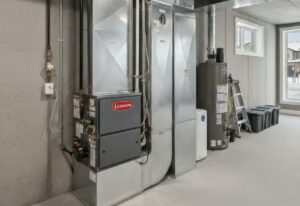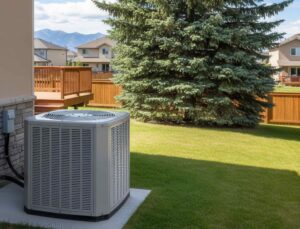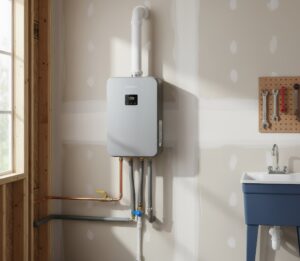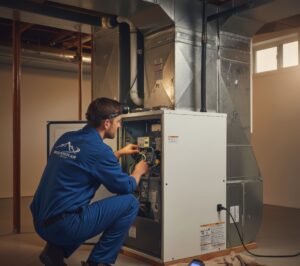If you can’t remember the last time your furnace was cleaned, you could be asking for trouble.
The general rule is to clean a furnace in Calgary at least once a year but more regularly if your furnace is old or allergy/asthma sufferers or pets are in the household.
Deep cleaning is part of general furnace maintenance, ensuring that your furnace can endure the challenges thrown at it throughout not only the coming Calgary winter but many winters beyond.
Modern, high-efficiency furnaces may be able to maintain good performance with less regular servicing but this is inadvisable. Most homeowners don’t want to take chances with their family’s comfort, health, and safety.
Let’s take a look at why annual furnace cleaning is advisable, what exactly needs to be cleaned, what the telltale signs are of a furnace in need of cleaning, and what a standard furnace tune-up in Calgary includes…
How often to clean a furnace in Calgary?

Once a year is the standard recommendation for furnace cleaning in Calgary—twice per year if you want to be super-diligent or if you have a problem with pet dander, allergies or asthma in your home.
Regular cleaning will help you get the most out of your furnace while also maintaining energy efficiency and providing peace of mind in midwinter—when unexpected furnace problems can be triggered by the extra load placed on heating systems in plummeting temperatures.
Remember, your furnace affects not only your family’s warmth and comfort levels but also the indoor air quality. So, if you have an old furnace and people with breathing difficulties in the household, you could be risking more than a few winter shivers.
When troubleshooting furnace problems in Calgary homes, a lack of cleaning is a major culprit. Dirty components can prevent your furnace from starting up, lead to a lack of heat or cold spots in the home, damage the overall air quality that you and your family are breathing, and shorten the life of your furnace. It may also inflate your home’s energy bills unnecessarily.
Furnace cleaning and general maintenance once a year can prevent these problems and help you maintain comfort levels.
When is more regular furnace cleaning required?
Some home environments demand more regular furnace cleaning than others. The following conditions could make annual furnace maintenance inadequate (you may need to call the pros twice yearly rather than once):
- Your furnace is very old
- You have a large family
- You have pets (pet dander easily finds its way into furnaces and can impact performance)
- People suffer from breathing problems or allergies in your home
- Your furnace is performing below par

Which parts of a furnace need cleaning?
Let’s quickly remind ourselves how a furnace works so that we can identify what needs cleaning and why.
- Natural gas or propane is ignited in the furnace’s burner
- Combustion gases from the burners heat up and flow through the heat exchanger
- The metal heat exchanger heats up
- The exhaust flows out of the flue
- The heat exchanger transfers its heat to incoming cold air
- The furnace’s blower forces the heated air into the ductwork
- The heat is distributed throughout the home
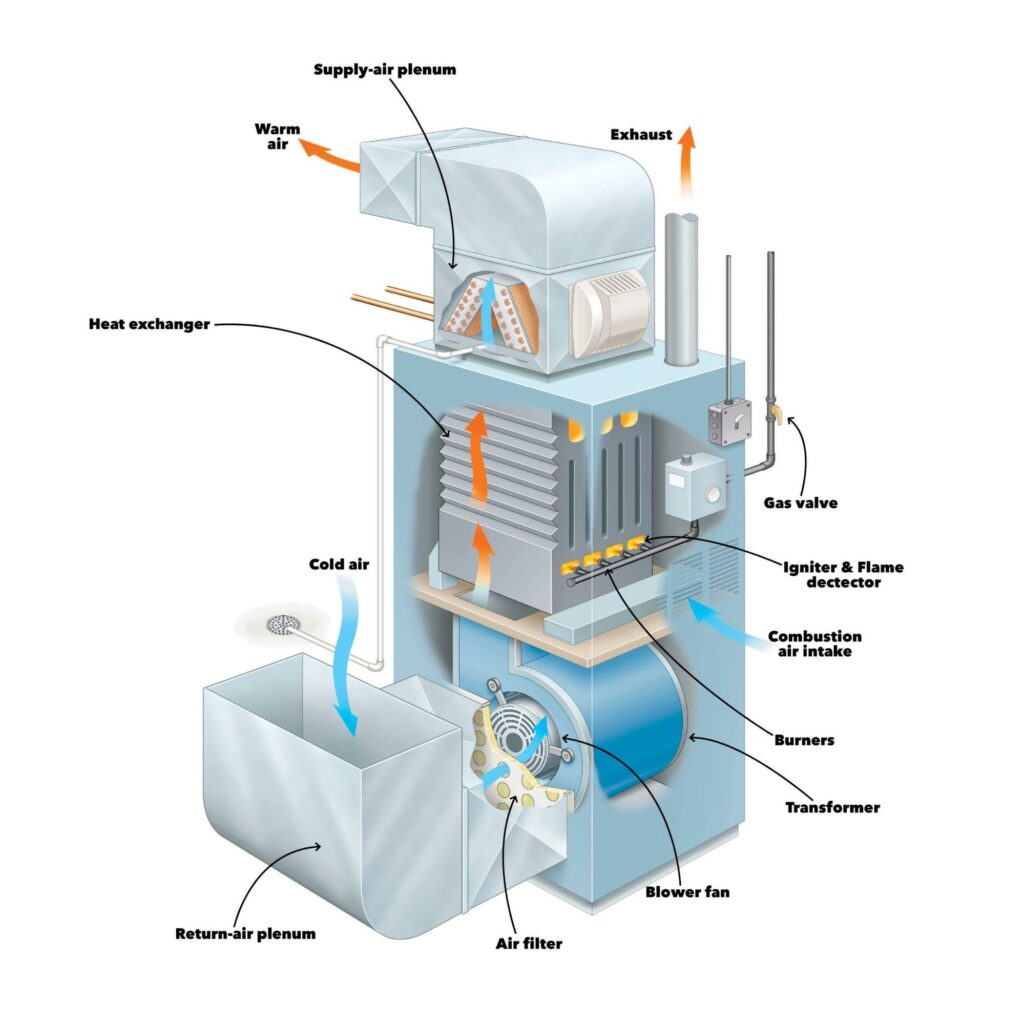
From the heating process, it’s easy to see how the burner, heat exchanger, blower, and ductwork are all key components of the furnace. We should add the filter to this essential list of components that need regular cleaning.
Like the key components in any mechanical process, keeping them clean and lubricated aids performance in the long run. Dirt and grime can waste fuel and lower the heating efficiency of the appliance.
When furnace cleaning, focus on the following parts:
Air filter

A furnace’s air filter prevents dust and other debris from clogging up the system and causing problems.
Clean or replace the filter at the beginning of the heating season and about once a month during the late fall, winter, and early spring, when furnaces in Calgary are often in constant use.
Not all furnace filters can be cleaned but there may be no clear visual indicator to let you know if your filter can be washed. Refer to your user manual or call the filter manufacturer to confirm.
Take the filter out, hold it up to the light, and, if it looks clogged, replace or clean it. If a replacement is required, you should easily be able to find the same type and size of filter(s) to fit your furnace make and model—either online or at one of the major home improvement stores.
Burners

The burners are responsible for igniting the natural gas (or propane) that fuels your furnace. If they become misaligned or clogged with dirt or grime, this can prevent heat from being generated efficiently.
Some homeowners carefully vacuum around the burners, which should provide adequate surface cleaning. Deeper cleaning by taking the burners apart can prevent further problems but, like most furnace maintenance, this is a job for licensed HVAC professionals only.
Flame sensor

The flame sensor is a safety mechanism that detects whether there’s a burning flame inside your furnace. If the flame inside the burner assembly goes out, unburned gas will escape from the heating system, creating a serious health hazard or even an explosion.
The flame sensor needs delicate cleaning as a dirty sensor can prevent the flame from igniting.
Heat exchanger

Dirt buildup or blockages around the heat exchanger can create other furnace problems that are easily resolved with regular cleaning by professional HVAC technicians.
To inspect, access, and clean the heat exchanger requires special know-how and tools. It’s a job for qualified service technicians.
Combustion chamber

The combustion chamber is where air and fuel mix and burn. This process creates soot, which can corrode internal components and build up on burners and pilot lights if it is allowed to sit.
Just as a sooty chimney needs regular cleaning, so does your furnace—and, again, it’s a job for a qualified HVAC professional.
The blower

It’s easy for the blower assembly, belts and pulleys to the blower, and motor housing to become clogged with dust and dirt, especially furnaces with a “squirrel-cage fan”.
The blower assembly needs to be disassembled and thoroughly cleaned at least annually to prevent problems and maintain air quality in the home (especially important if allergy or asthma sufferers live in your household).
Depending on the design of your furnace, cleaning the blower assembly involves removing the panel that covers the filter and possibly the front panel cover.
Most furnace blower motors are built to run and run by furnace manufacturers but a professional can carefully clean and lubricate the motor as required to maintain optimal performance.
Ductwork
Duct cleaning helps maintain the air quality in your home and ensures that warm air circulates smoothly. Most professionals recommend cleaning your ductwork every few years.
A professional technician will cover the work area before removing the register covers and inspecting the ductwork. A vacuum can be used to clean the air ducts, registers, and vents before the ductwork is disinfected with a spray to prevent unwanted bacteria.
Flue pipes

Your furnace’s flue pipes are responsible for safely disposing of the harmful exhaust gases that result from the combustion process in your home.
Usually, the flue pipes extend upwards and out around the roofline. These should be cleaned annually and checked for rust or leakage.
General furnace area cleaning

Your furnace is likely located in your basement, performing its magic there and connected by ductwork to heat every room in your home.
The area around your furnace is the place to start with regular furnace cleaning. Don’t be tempted to store unwanted household junk next to the furnace. Leave your unit accessible and with space in the area immediately around it—and keep that space clean and tidy. This reduces the risk of fire and also allows good air circulation around the furnace, aiding efficiency.
How does a Calgary winter impact your furnace?
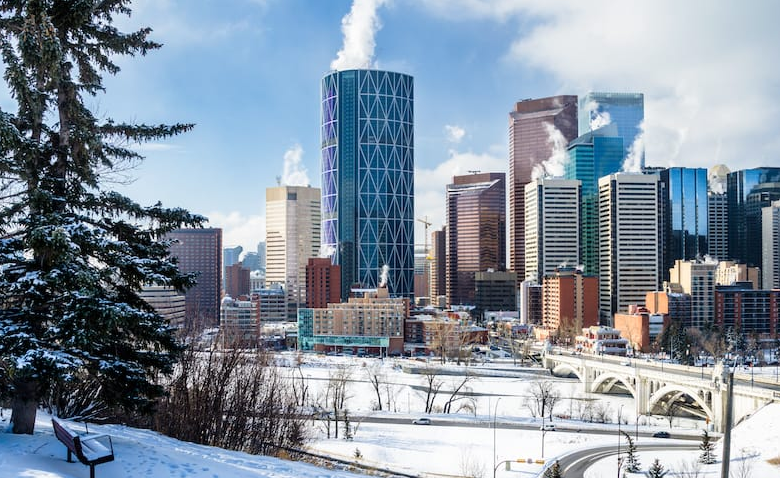
Calgary homeowners know how essential their furnaces are when the temperatures start to drop but may not be aware of how cold weather affects performance and maintenance requirements—including cleaning.
Temperatures in Alberta typically range between -5 to -15°C in winter, while regularly hitting -30 to -40°C for short spells. Low temperatures like these make furnaces work harder to maintain comfortable temperatures.
The heat generated by the furnace indoors tries to escape outdoors and vice versa, impacting not only indoor comfort levels but also the furnace’s performance, with longer cycles to maintain the thermostat setting, increased energy usage, and greater wear and tear on furnace components.
The extra strain placed on your heating system necessitates steps to keep it running efficiently, not least of which is cleaning and regular maintenance.
Prevent debris buildup in cold temperatures

In extreme cold, your furnace must work doubly hard to raise the temperature in the home to the desired level. This creates extra soot from combustion and all key components of the system can attract more general dust and debris than at other times of year.
Dust and debris cause two major issues:
- Impairing furnace performance (lower efficiency or heating capabilities)
- Unnecessary wear on the components (shortening furnace life and efficiency)
Cleaning your furnace regularly will help prevent these issues. Pay special attention to inspecting and cleaning/changing the air filters every month or so during the coldest months of the year,
Scheduling a professional furnace inspection and maintenance just before the cold arrives can prepare your heating system for the onslaught of winter.
Preventing excess strain on your furnace in the coldest temperatures
Other than ensuring excellent insulation in your Calgary home, you can use strategies to limit the strain placed on your HVAC system during the coldest days of winter.
Set your thermostat on hold at around 20-21 degrees Celsius rather than switching it lower at night time or when you’re out for the day. This will prevent your furnace from struggling to re-heat the home in the morning.
You could also save energy if you set the temperature just two or three degrees lower than the ideal room temperature at night time or when at work, for instance.

Older or undersized furnaces may struggle to maintain your ideal room temperature during the coldest snaps. Try to limit the strain placed on your HVAC system during these periods. Turning the thermostat all the way up on older or smaller furnaces may risk damage to some components as you ask the unit to work too hard. An extra layer of clothing (or two) with a slightly lower room temperature may be more advisable if your furnace is struggling.
At Alberta Mountain Air, our professional technicians will be happy to advise on strategies for conserving heat and coping with the coldest snaps during a furnace cleaning/tune-up.
Benefits of regular furnace cleaning
The benefits of scheduling regular furnace cleaning and maintenance can be summarized as follows:
- Less risk of furnace failure and costly repairs
- Lower risk of hazards (e.g., carbon monoxide leaks)
- A furnace that lasts longer
- Higher efficiency (reduced energy consumption and lower bills)
- Optimized comfort levels for you and your family all year round (even in the depths of winter)
- Cleaner indoor air quality (especially important for allergy and asthma sufferers)
- Better overall HVAC performance
- Protects the manufacturer’s warranty
- Quieter operation with fewer loud furnace noises, rumbles, and vibrations
- Peace of mind that emergency repairs for unexpected problems won’t be needed
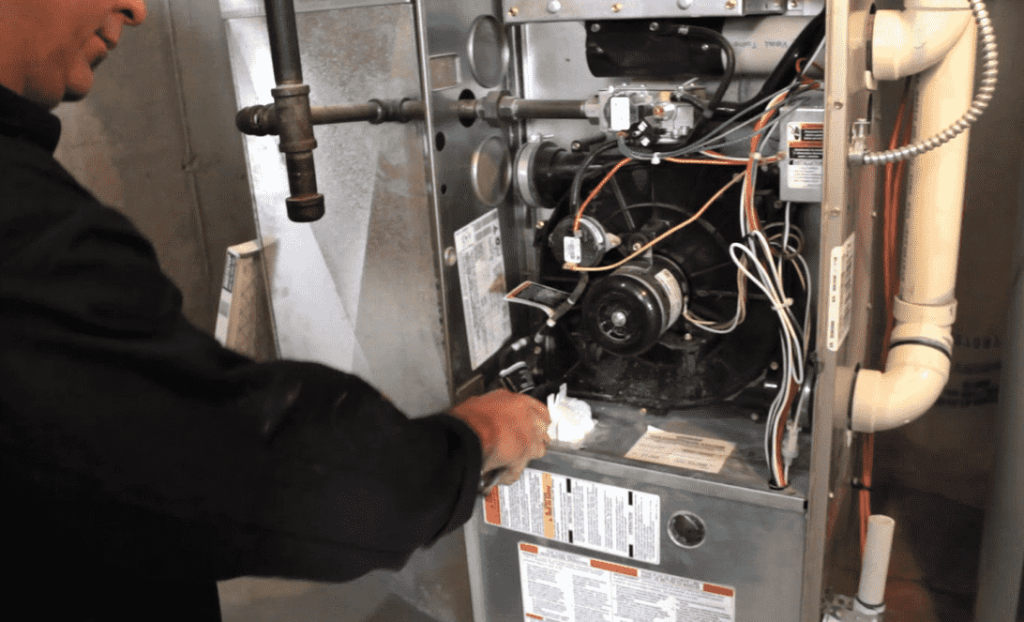
How do you know when your furnace needs cleaning?
It’s not always obvious that your furnace needs cleaning—and with the unit usually located in the basement, out of sight may be out of mind.
This is why many homeowners forget the annual maintenance check and only call a technician for emergency furnace repairs when the home’s freezing cold and their families are shivering.
Keep a careful lookout for the following signs as they could mean that an inspection, cleaning, and tune-up is long overdue:
Visible dirt and debris buildup
Making regular inspections of the furnace filters is the single most important step that homeowners can take to prevent dirt and debris from building up in the furnace.
Inspect the filter by holding it up to the light. If it is clogged with dust, pet dander or other debris that shouldn’t be there, it needs cleaning or replacing.

A few days later, inspect the new or recently cleaned filter again. If it’s already become grimy, your furnace likely needs a deeper clean.
You can also check the vent frames in your home for visible dust, hair or dirt buildup. If they look dirty, schedule a professional furnace clean and tune-up.
Yellow furnace flame
If you have an older furnace, your gas burner pilot light should burn with a blue flame. This means that the gas in your furnace is completely combustible. An orange or yellow flame is hazardous and could mean that your burner or flame sensor is dirty and there is a lack of proper ventilation.

One of the major safety risks for you and your family with a furnace is carbon monoxide leaks. Call an HVAC professional immediately if the burner flame is any other colour than blue.
Modern furnaces use a spark ignition or hot surface igniters rather than a pilot flame. These require less maintenance and rarely need cleaning.
Frequent furnace repairs
If you need to call out a technician for furnace repairs more often, it could be a sign that your furnace needs a full tune-up with deep cleaning—or a replacement if it’s an old furnace.
Your repair technician should advise you in this case. Our team of professional technicians helps Calgary homeowners make informed decisions about when to schedule maintenance or repairs—or if a new furnace installation would be a more economical solution in the long run.

Short-cycling
If your furnace turns on but keeps shutting off very quickly, it could point to a clogged air filter, which can be fixed relatively easily (see above).
Alternatively, it could mean a dirty flame sensor, which is a more serious (and hazardous) problem requiring professional attention.
Either way, your home won’t heat up properly…

High monthly energy bills
If your monthly energy bills rise without a good explanation, the first place to look is your HVAC system, as it’s the main energy guzzler in your home.
Dirt buildup can cause your furnace to overwork. This will translate to higher-than-necessary energy usage and rising bills. Thorough cleaning may help restore efficiency to your furnace, return bills to normal, and restore comfort levels in your home.

Cold air blowing
A furnace that blows cold air may need a clean or more in-depth attention.
If the issue is not fixed by cleaning or replacing the air filter or unblocking the condensate line, call the professionals to troubleshoot the problem and clean your furnace.

Can you clean your furnace yourself?
Beyond cleaning or replacing a furnace filter and keeping the area around your furnace free of debris, don’t attempt thorough furnace cleaning as a DIY job.
Anything that requires taking the furnace apart to access the furnace’s key components should be performed by a licensed HVAC professional only. Attempting this yourself could cause damage to the furnace or, worse, risk the health and safety of your family.
Some homeowners attempt cleaning with nothing more than a toothbrush, a vacuum cleaner, and an emery cloth. This may be fine for the visible surface areas of your furnace, the vents/registers, and the area around your furnace—but deeper cleaning is also required and this is part of specialized maintenance, often requiring high-pressured air and an industrial vacuum.
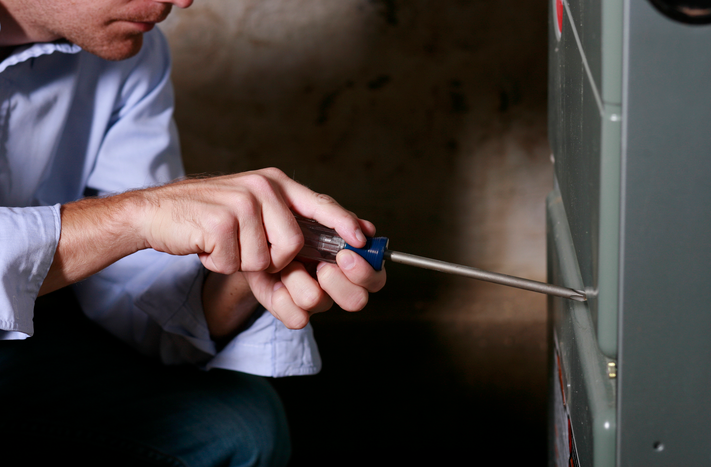
Some adventurous homeowners may remove the access panel and clean away the visible dust and debris from the inside areas of the furnace. Generally speaking, anything that requires disassembling or unscrewing should be left to a professional as this will protect the warranty and ensure furnace safety as well as optimal performance.
Is cleaning part of regular furnace maintenance in Calgary?
Cleaning is the most important part of regular furnace maintenance, along with lubricating and testing/adjusting all the key components of the heating system.
A furnace clean and tune-up from Alberta Mountain Air includes a checklist of the following:
- Inspecting and cleaning/replacing air filters
- Inspecting and cleaning flue pipes
- Inspecting and cleaning the heat exchanger
- Inspecting and cleaning the blower
- Inspecting the safety controls to ensure optimal performance
- Inspecting the ductwork and, if necessary, cleaning it
- Checking the natural gas pressure
- Tightening and securing of all furnace elements
- Lubricating all moving parts as necessary
- An overall assessment of the furnace performance and condition

Professional furnace cleaning in Calgary
Annual furnace cleaning and professional maintenance is a minimum requirement to protect your furnace’s performance, longevity, and warranty terms.
Your HVAC system may need more regular cleaning if you have an older furnace, asthma or allergy sufferers in your household, and/or pets.
If you clean your furnace once a year, do it in the early fall to ensure your home is ready not only for winter but for the colder autumn and spring days in Calgary too.
If issues crop up throughout the year, additional cleaning and maintenance from HVAC professionals may be required to protect your furnace, extend its life, and keep your family safe and comfortable at home all year round.
The HVAC technicians at Alberta Mountain Air have the know-how, experience, and equipment to clean your furnace and maintain peak performance. We are SAIT-certified and highly trained in furnace repairs, maintenance, and installations.
Call us at 403-236-4366 or contact us online to arrange a callout.
